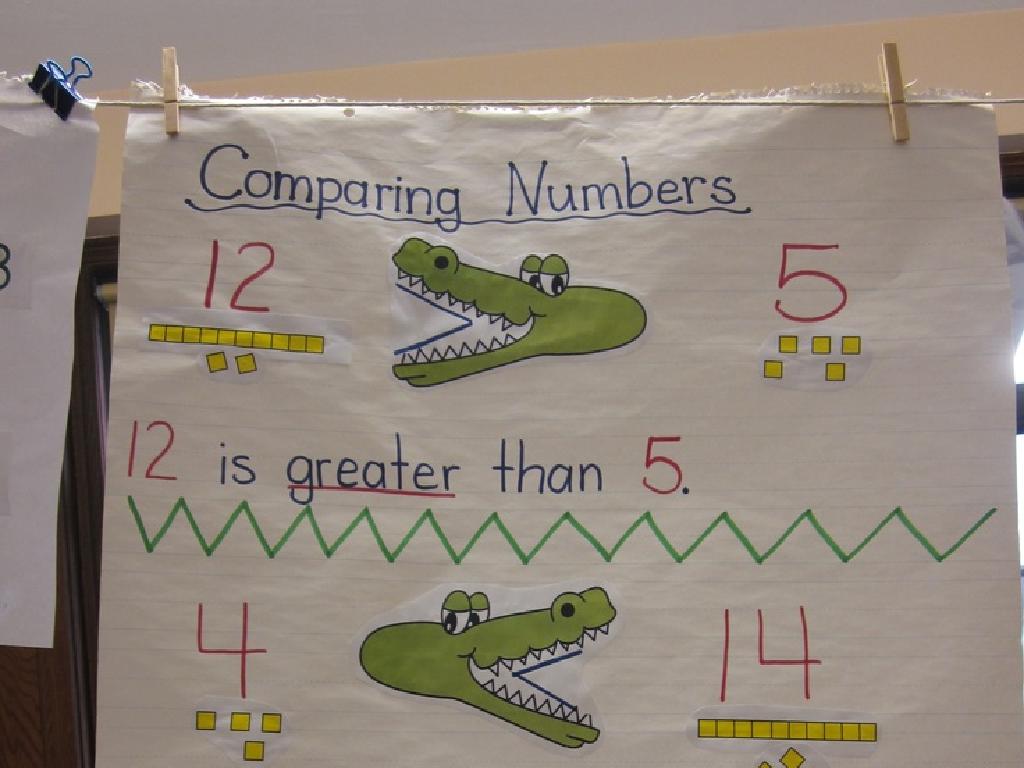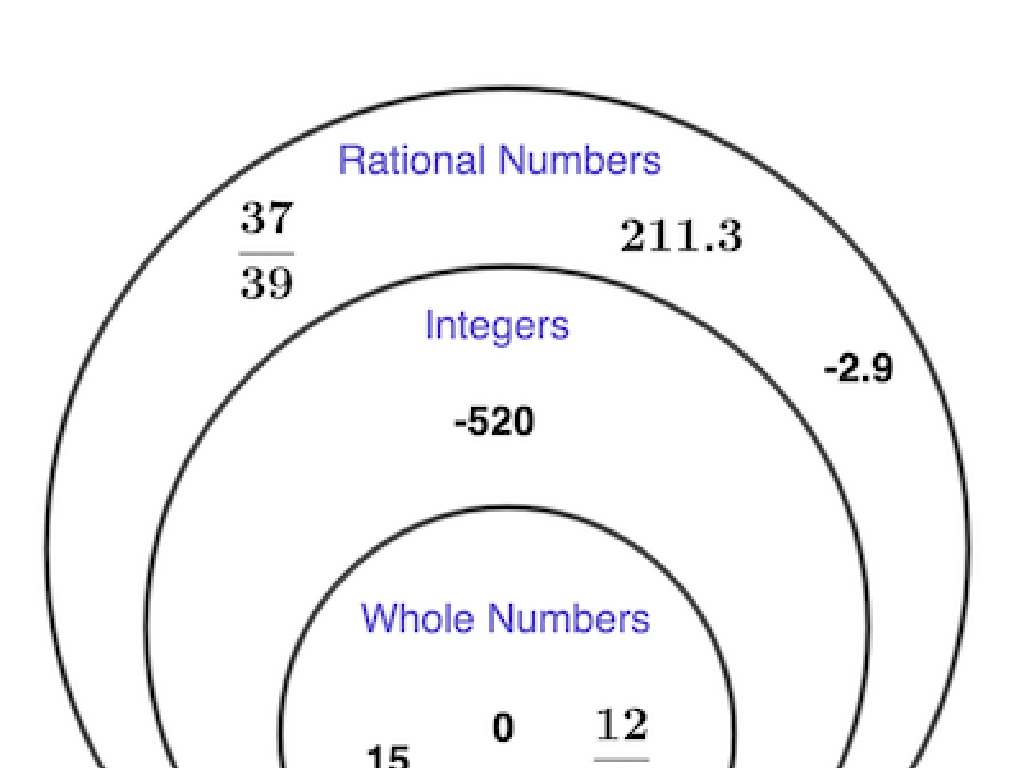Front, Side, And Top View
Subject: Math
Grade: Eighth grade
Topic: Three-Dimensional Figures
Please LOG IN to download the presentation. Access is available to registered users only.
View More Content
Understanding 3D Figures: Views and Perspectives
– Comprehend 3D in everyday life
– How objects look different from various angles, like buildings or furniture
– Explore shapes beyond 2D
– Transition from flat shapes to 3D solids like cubes, spheres, and pyramids
– Learn front, side, top views
– Front view: face directly; side view: from the left/right; top view: from above
– Visualize objects from all angles
– Practice by drawing or using models to see how one object can have multiple views
|
This slide introduces students to the concept of three-dimensional figures and how to visualize them from different perspectives. Emphasize the importance of understanding 3D as it relates to real-world objects and their representations on paper. Encourage students to think about how everyday items look from various viewpoints. Explain that recognizing front, side, and top views is crucial for interpreting and drawing 3D objects. Provide examples like a box or a car and show how each view presents different information about the shape. Activities can include drawing different views of classroom objects or using 3D models to explore these concepts further.
Exploring Three-Dimensional Figures
– Define 3D figures
– Objects with length, width, and height
– Contrast 2D and 3D figures
– 2D are flat, 3D have volume
– Real-life 3D figure examples
– Buildings, dice, cans
– Understanding views of 3D figures
– Front, side, top views reveal shape
|
This slide introduces students to the concept of three-dimensional figures, which are objects that have length, width, and height. It’s crucial to help students understand the difference between 2D and 3D figures, with 2D being flat shapes like squares and circles, and 3D being solid objects like cubes and spheres. Provide real-life examples that students can relate to, such as buildings (cubes), balls (spheres), and cans (cylinders). Emphasize the importance of different views (front, side, and top) in understanding the full structure of 3D figures. Encourage students to bring in objects from home to discuss their 3D properties in the next class.
Perspectives of 3D Figures
– Understanding different views
– Front, side, top views reveal different aspects of a 3D shape.
– 3D figures from various angles
– Imagine rotating the shape to see all sides.
– Significance of multiple perspectives
– Viewing problems from different angles can lead to better solutions.
– Application in math and real life
– Architects use views to design buildings; we use them to understand geometry.
|
This slide introduces students to the concept of viewing three-dimensional figures from different perspectives. Emphasize the importance of understanding how a 3D figure can appear differently when viewed from the front, side, and top. This understanding is crucial not only in mathematics when solving geometry problems but also in various real-life situations, such as in architecture or product design. Encourage students to visualize rotating objects in their mind to see all the different views. Discuss how adopting multiple perspectives can lead to more comprehensive solutions in both mathematical problems and life challenges. Provide examples such as how an architect visualizes a building from all sides before the construction begins.
Understanding Front View of 3D Figures
– Identifying the front view
– The front view is the perspective from the primary angle of sight.
– Characteristics of front view
– It shows height and width but not depth.
– Examples of front views
– Example: The front of a cube shows a square.
– Non-examples to contrast
– Non-example: Viewing a cube from a corner is not a front view.
|
This slide aims to help students recognize and understand the front view of three-dimensional figures. Emphasize that the front view is what one would see when looking directly at the object from its main facing side. It’s important to note that while the front view reveals the height and width of the figure, it does not provide information about the depth. Show clear examples of front views, such as the face of a cube, which appears as a square. Contrast these with non-examples, where the object is viewed from an angle that reveals multiple sides, to clarify the concept. Encourage students to sketch front views of various 3D shapes to reinforce learning.
Side View of 3D Figures
– Identifying the side view
– Side view: a 2D representation from one side
– Left vs. right side views
– Left side view differs from the right
– Practice with examples
– Use blocks or shapes to visualize different sides
– Importance of side views
– Helps in understanding object’s structure
|
This slide introduces students to the concept of side views of three-dimensional figures, which is crucial for visualizing and understanding the structure of objects in mathematics, especially in geometry. Start by explaining that a side view is a two-dimensional representation of a 3D figure from a specific side. Clarify the difference between left and right side views by showing examples, perhaps using classroom objects or illustrations. Provide practice opportunities with various examples, such as blocks or geometric shapes, to help students identify side views. Emphasize the importance of mastering this skill for future topics in geometry and real-world applications such as engineering and architecture. Encourage students to sketch side views of objects around them for a better grasp of the concept.
Top View of 3D Figures
– Identifying the Top View
– Top view is seen from above, like a bird’s-eye view.
– Differences from Front & Side
– Top view flattens 3D objects into 2D, details may be hidden unlike front/side views.
– Sketching Top Views
– Practice by visualizing objects from above and drawing the outline and details.
– Activity: Real Object Views
– Choose various classroom objects to sketch their top view.
|
This slide introduces students to the concept of top views of three-dimensional figures. The top view is essentially how an object looks from above, which can be quite different from its front or side views due to perspective. Emphasize that while the top view simplifies a 3D object into a 2D plane, some details may not be visible as they are in other views. For the activity, have students select different objects around the classroom to sketch their top views, encouraging them to consider how complex shapes are represented from this unique perspective. Provide guidance on visualizing objects from above and translating this into a sketch. Offer examples like a cup (which may appear as a circle from the top) or a book (which could be a rectangle).
Comparing Different Views of 3D Figures
– Compare views side-by-side
– Place front, side, top views next to each other for the same object
– Relate different views together
– Understand how each view represents a different angle of the same figure
– Discuss view changes on rotation
– Observe how rotating an object changes its views
– Engage in group discussion
|
This slide aims to deepen students’ understanding of three-dimensional figures by comparing different perspectives. By placing the front, side, and top views side-by-side, students can see how the same object is represented from various angles. Encourage them to discuss how these views are interconnected and what information each view provides. During the group discussion, have students rotate objects and observe how the views change, promoting active learning and critical thinking. This exercise will help them visualize objects in three dimensions and improve their spatial reasoning skills.
Class Activity: Viewpoint Exploration
– Gather 3D objects, paper, pencils
– Draw front, side, top views
– Sketch the different perspectives accurately
– Focus on perspective and detail
– Ensure each view captures the object’s shape
– Share drawings with the class
|
This activity is designed to help students understand the concept of different viewpoints of three-dimensional objects. Provide a variety of 3D objects for students to choose from. Encourage them to carefully observe each object from the front, side, and top, and to draw what they see from each perspective on separate pieces of paper. Emphasize the importance of capturing the shape and any unique features of the object in their drawings. After completing their sketches, students will present their drawings to the class, explaining the differences between each viewpoint. Possible activities for different students could include drawing complex shapes, simple everyday items, or even creating their own 3D objects to draw. This will enhance their spatial reasoning and their ability to communicate their observations.
Real-World Applications of 3D Views
– Architects’ use of 3D views
– Architects create models to visualize structures from all angles.
– 3D views in product design
– Designers use different views to ensure a product’s functionality and aesthetics.
– Understanding multiple views
– Recognizing front, side, and top views helps in visualizing complex objects.
– Discussion on view importance
– Why do you think seeing all views of an object is crucial in design?
|
This slide aims to connect the concept of three-dimensional figures with their practical use in the real world, particularly in architecture and product design. Architects use 3D views to plan and present their projects, ensuring that every angle of a structure is accounted for. Similarly, product designers rely on different views to refine their designs, making sure the product is practical and appealing. Understanding how to interpret front, side, and top views is essential for students, as it develops spatial reasoning skills that are crucial in many STEM fields. Encourage a class discussion on the importance of these skills, asking students to consider how different views contribute to the design process and why they might be important for understanding and creating three-dimensional objects.
Review and Reflection: 3D Views
– Recap: Views of 3D figures
– Reflect on learning outcomes
– Consider how front, side, and top views relate to the actual 3D shape
– Upcoming: Building 3D models
– We’ll use today’s knowledge to build our own 3D figures
– Homework: Sketch 3D objects
– Draw the 3 views of everyday objects to practice
|
This slide aims to consolidate the students’ understanding of the front, side, and top views of three-dimensional figures. Start with a quick recap of the lesson, highlighting key points. Encourage students to reflect on what they’ve learned by discussing how different views provide information about the shape’s dimensions and structure. Inform them that the next lesson will involve applying this knowledge to build 3D models, which will help solidify their understanding. For homework, ask students to sketch the three different views of various objects they find at home to prepare for the hands-on activity. This exercise will enhance their spatial reasoning and ability to visualize 3D objects from different perspectives.
Homework: Exploring 3D Figures Through Views
– Find 3 objects at home
– Draw front, side, and top views
– Use a ruler for straight edges
– Note details in each view
– Observe how shapes change with perspective
– Discuss drawings in next class
|
This homework assignment is designed to help students understand the concept of three-dimensional figures by observing everyday objects. Students should select three different objects and carefully draw the front, side, and top views on graph paper, if possible, using a ruler to maintain straight edges. Encourage them to pay attention to the details that are visible from each perspective, noting how the shapes and proportions change. In the next class, there will be a discussion where students will share their drawings and observations, allowing them to learn from each other’s perspectives and understand how 3D objects are represented in 2D views.





